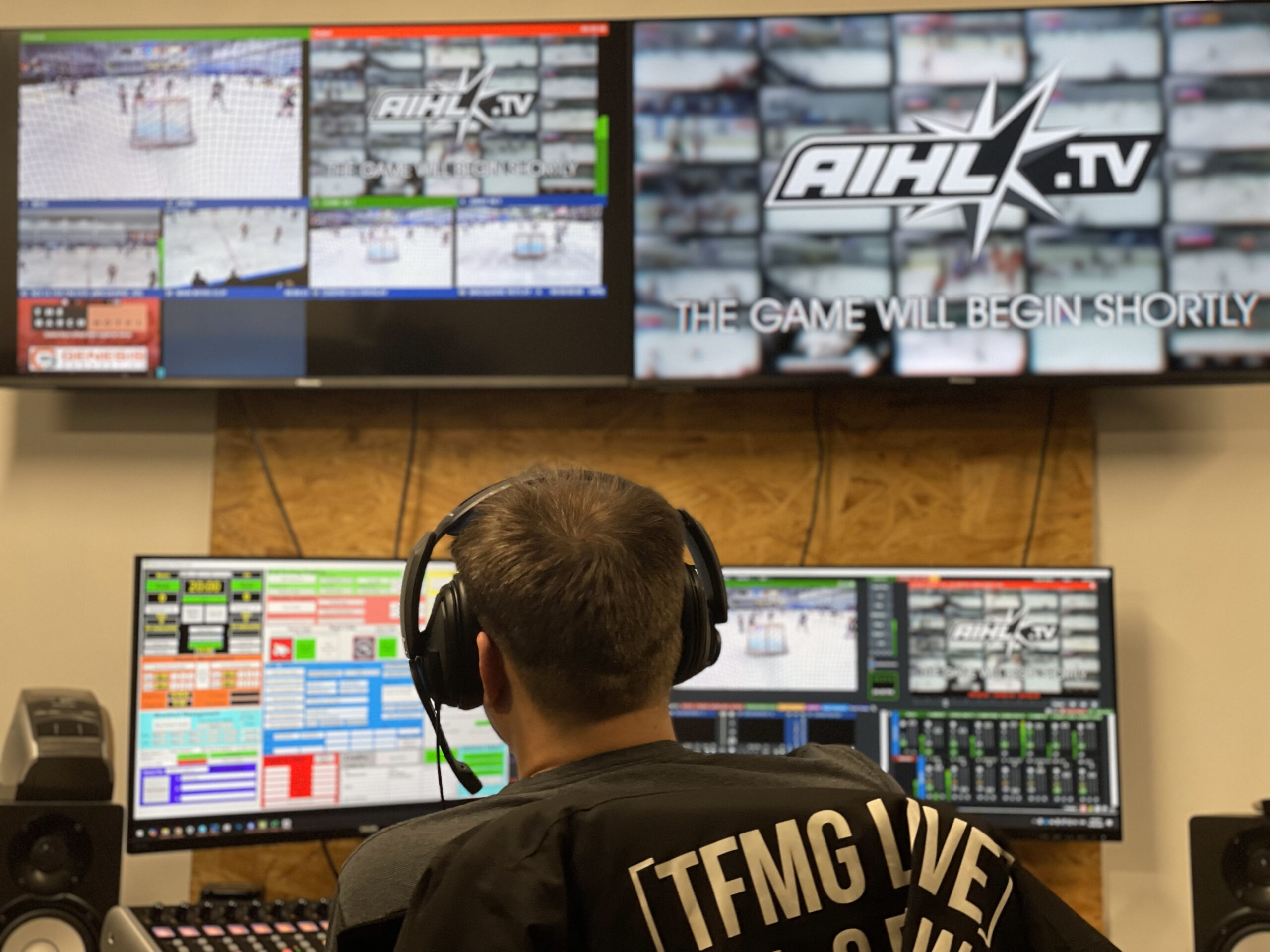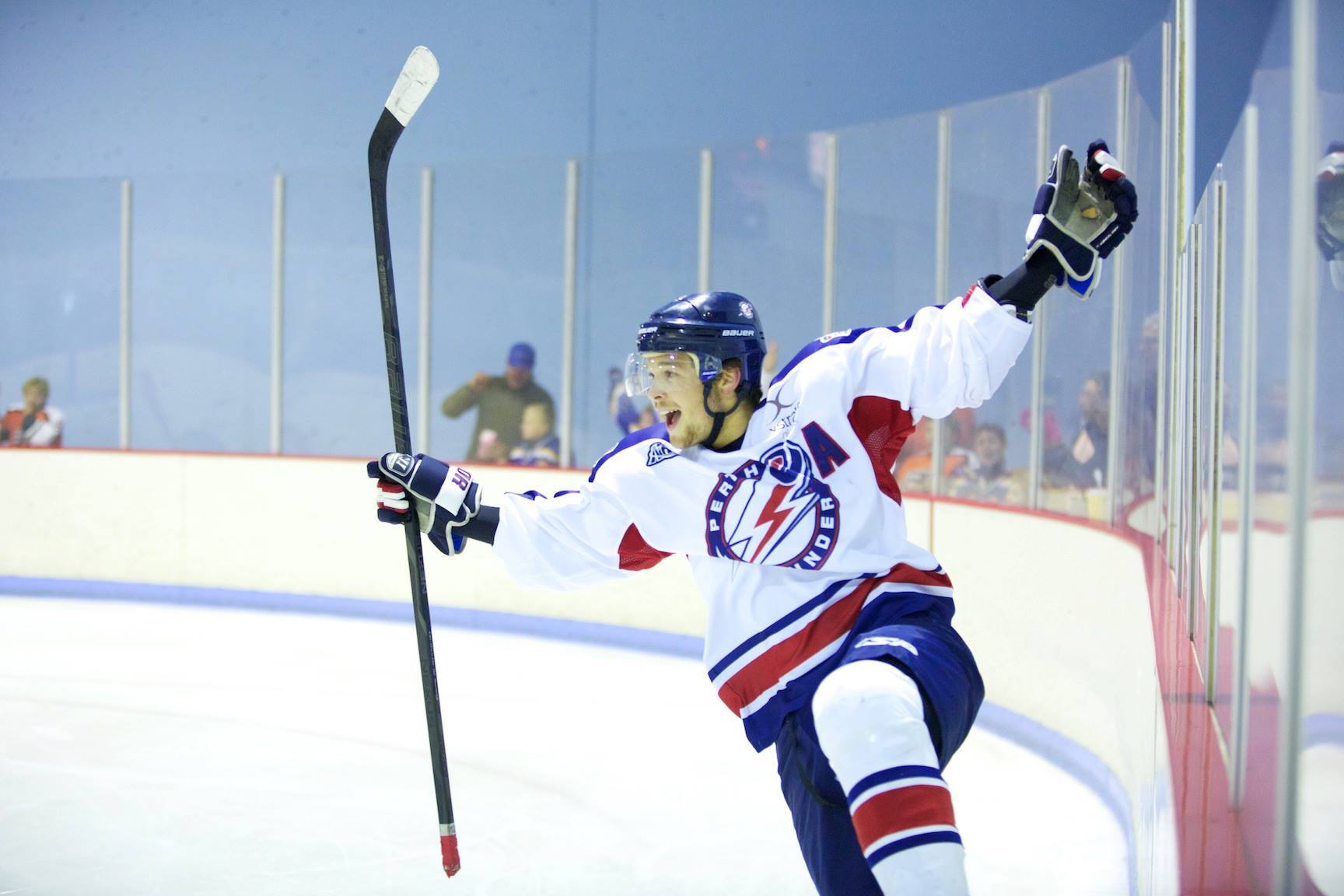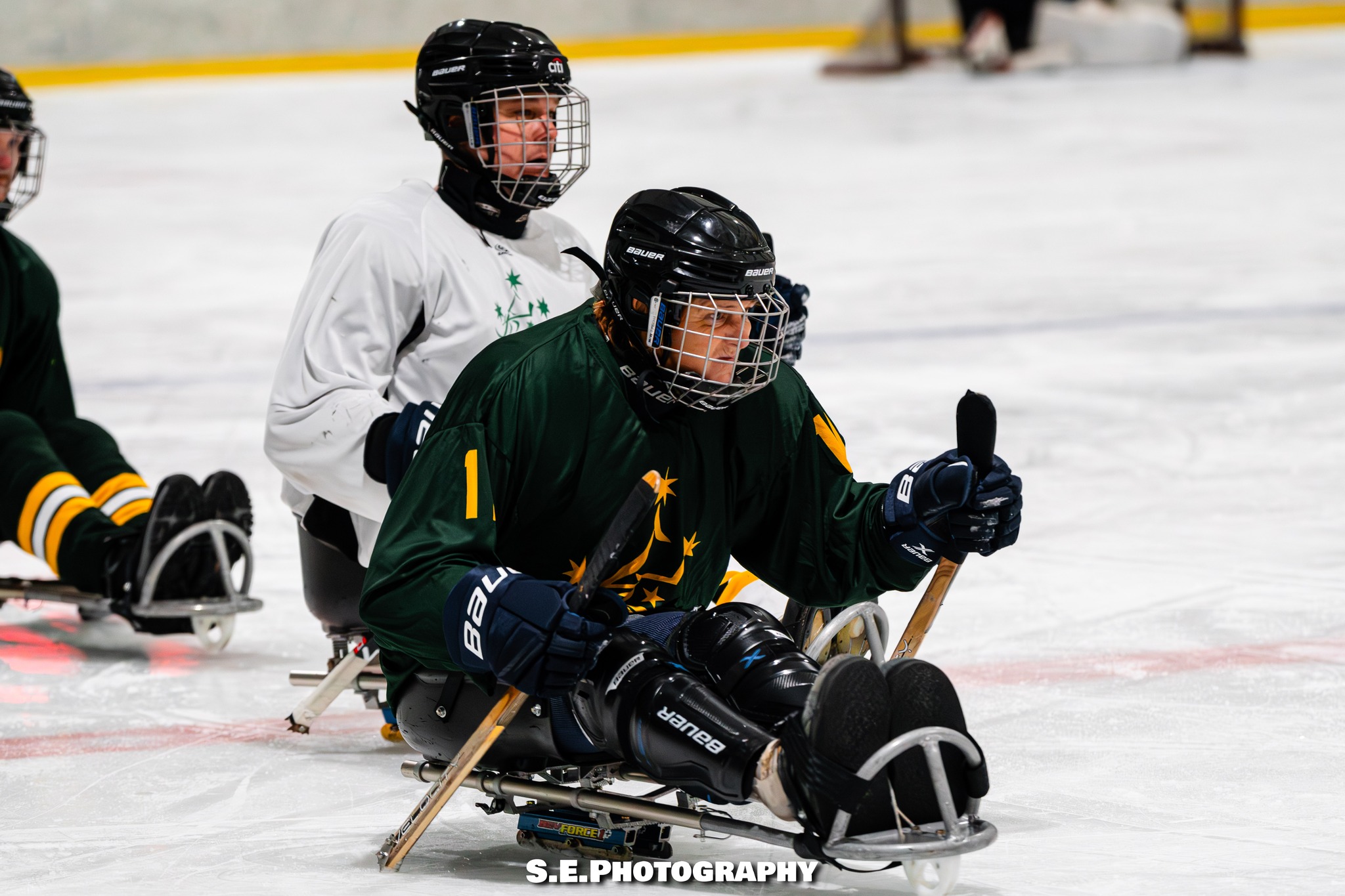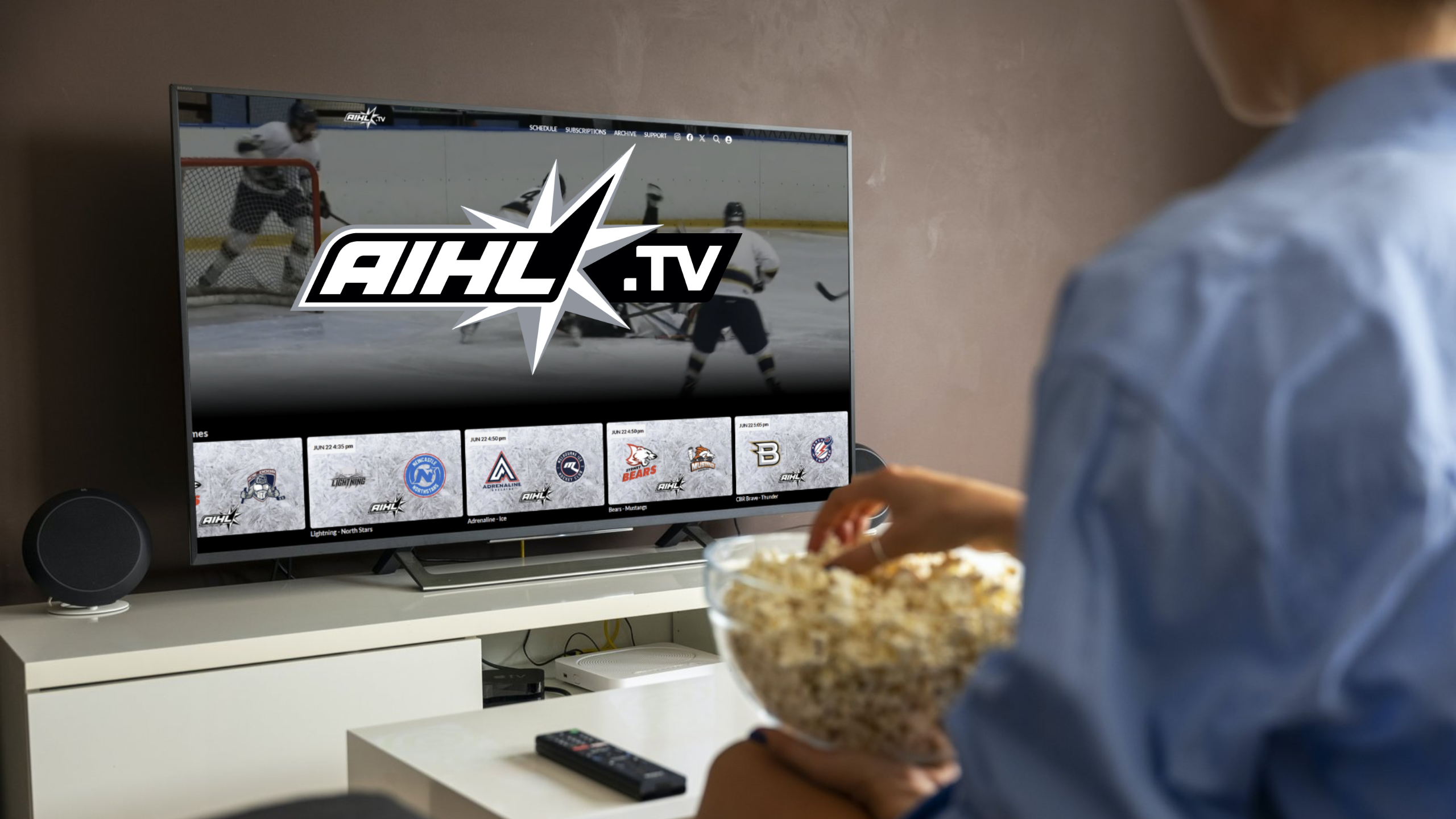Article by Beth Smith
It’s 6.30 pm, two minutes before the Sydney Bears and the Melbourne Ice return to the ice after the second intermission, and one of the camera inputs on the director’s multi-view screen goes black.
“We just lost Nugs. It looks like someone’s unplugged the powerpack,” the director, who is in the studio in Newcastle, says over comms to the two camera operators on-site at the Macquarie Ice Rink.
“I’ve got it.” Alyssa Longmuir, one of the two cam-ops, races around the rink to the camera behind the goal net closest to the away team bench – Nugs – so named because it’s situated closest to the food court, and therefore to the nuggets.
The video feed for Nugs is transmitted wirelessly, with the receiver mounted on the main grandstand’s balustrade to avoid lengthy cable runs creating trip hazards in the venue. Unfortunately, a fan has managed to penetrate the barricade around the receiver and accidentally knocked out the power supply, taking the camera feed offline.
Alyssa reconnects the powerpack, and the camera input back in the studio lights up again. Seconds after that spot fire is extinguished, the director says: “Ah, what happened to the hero cam?”

The studio’s view from this camera is now tilted dangerously askew, another spectator having jostled the camera that delivers the close-up shots of face offs and goals that bring the game to life for hockey fans at home.
Racing up two flights of stairs from ice level back to the camera platform, Alyssa re-sets the camera back into place just as the director calls: “Okay, let’s go face-off. Final twenty minutes.”
The linesperson drops the puck and play starts up again, the viewer none the wiser of the frenetic action behind the scenes.
This is just one of five productions happening across the league by three different production companies, and forms one of Thought Fox Media Group’s (TFMG) busiest nights of the season. Three Thought Fox productions are happening simultaneously, three directors, six commentators, six camera operators and twelve cameras, all managed remotely from the TFMG production studio in Newcastle.

It’s also an example of the risks and challenges production companies, including ATC Productions, Front Row Screens and Spacequake Sports, face to bring the action to screens at home. Most venues across the league weren’t built for these kinds of productions. Network connectivity, exposed equipment, and the unique challenges of each rink factor into each production across the league.
Not every moment of production for an AIHL game day is high-octane. In fact, for Thought Fox, the day starts with everyone hitting their normal resting heart rate.
At 10 am, the team lists, credits, and graphics get configured for all three games Thought Fox is producing that day. Call times for the crew had gone out the previous evening, but at 11 am, a camera operator posts in TFMG’s communications server that she’s been held back at her other job and asks whether anyone can take her shift.
Another camera operator jumps in quickly to say she’s happy to take over. Luckily, it’s an easy swap as both cam-ops are local to the Newcastle game; it’s harder for a crew to make late changes like this for games that require travel to Sydney and Erina.
By midday, Michael Smith is at TFMG’s production studio and handing over equipment to the Erina crew. Their game will be the first of the night, with warmups at 3.15 pm and puck drop at 3.30 pm.

At 12:30 pm, Michael travels to Hunter Ice Skating Stadium (HISS) to set up the wide and hero cameras, bench cameras, and attach the battery packs for the cameras behind the goal nets. There too, the net cameras are exposed to crowds, but have protection from the pucks via the glass surrounding the ice surface.
There’s a public skate still in progress, so he waits for the session to end at 2.30 pm before setup can be completed without having to navigate the crowds.

By this point, the camera ops have arrived in Erina and are sending their feeds through, which Michael checks before heading back to the studio. Daniel Evers, another director, is covering the Central Coast Rhinos and Sydney Ice Dogs game, but as senior producer Michael has his eye on it all.
“This is the longest part of the day,” says Michael, settling in at his desk at the studio. “Waiting for the Sydney feeds to arrive.”
While the feed isn’t due to come through until 4 pm, and he trusts his experienced Sydney crew, the nerves are always stronger on a three-game day. It’s the nature of live production that you’re going to face problems and you’re going to have to solve them on the fly.

“Every production company faces it, whether you’re ATC, Front Row Screens or Spacequake. We all come across challenges and have to find a way to work through them.”
Live production is often stressful, and each Thought Fox director handles it in their own way. Michael doesn’t eat before a game. Tegan Willis arrives an hour earlier than she needs to. Dan plans. All of them are driven by the need to put out the best production possible, to tell the story in the best way they can.
The first challenge of the day comes at 5 pm in Newcastle, where Tegan is directing. One of the commentators is coming through louder than the other and her initial problem solving hasn’t produced any improvements.

She mutes the commentators during the anthem and quickly shoots Michael a message, however moments later she’s figured it out: the commentators switched positions, and thus are using different microphones than they would usually be. Having overcome her first challenge of the night, Tegan settles back into what will prove to be a fairly smooth game from a production perspective.
The Sydney game is another story. For the whole first period, Eric Brook has been commentating solo as Michael battles network issues at the Macquarie Shopping Centre to get the second commentator Sera Dogramaci online. Both the cinema and food court that look down over the sold-out rink are full of spectators, many of them on their phones drawing network bandwidth.
Finally, at the start of the second period, Michael manages to bring her in, and the tenor of the commentary gains another level of energy with the powerful combo of Eric and Sera bringing insight and play-by-play to fans who weren’t able to get a ticket to the packed game.

Having the Sydney-based commentator provide her voice from the rink rather than a booth in the studio is a risk Michael has chosen to take on to accommodate Sera’s expertise as both a coach and a player at the highest levels of ice hockey in Australia. Her rapport with Eric has proven to make an engaging and insightful commentary duo over the last two seasons.
“It’s a sacrifice we’ve made to have Sera join us on the broadcast because otherwise, she has to spend five hours driving up and back from Newcastle, losing valuable time with her family.”
And it’s a risk that pays off: “Eric, your energy lifted so much that period. I’m glad we solved that.”

By 6.30 pm, the Erina game has wrapped up and both Sydney and Newcastle games are headed into their respective third periods. On comms, directors prepare camera operators for upcoming shots: “Hero. Wide. Far side face off. Flash. Play replay.”
Similarly, camera operators feed back to their directors, who are working either remotely or from a small booth with only the camera vision to guide them. At one point, Alyssa alerts Michael to a team swapping their goalie at one end just before play resumes up the other end of the rink.
It’s not all short, sharp instructions, however. Alyssa tells the studio crew about the friendship bracelets the Sydney Bears are selling (“this might be the best merch I’ve ever seen”) and at one point in an intermission has a long conversation with a new Bears fan, instructing her on the best toilets in the rink and where to buy drinks.
Each director, as well, has their own style. Michael switches quickly between conversation and instruction, Dan is planned and methodical, while Tegan’s strength is coaching her camera ops. “That was a great corner, Bec. You’ve really improved after doing the IHA tournament.”
Tegan is an experienced director but generally prefers camera work. Her natural strength lies in coaching camera operators, which means Michael puts her in the director’s chair as often as he can. The previous week, she came to the studio for a game she wasn’t scheduled for, just so she could coach a new camera op through the first period of the game.

It’s this team atmosphere which keeps crew members coming back season after season, the whole crew banding together to get out the best game they can. Tonight’s games are the last productions for both the Sydney Bears and the Newcastle Northstars, and as each crew member wraps a call goes out over comms: “And that’s a wrap for Sera Dogramaci, Eric Brooks, and Sam Ferguson.”
The studio crew and the Newcastle crew both gather at HISS after the game, standing on the ice for photos and hugs. Another season almost over. There’s pride there, but also sadness. The crew are close outside of hockey and there will be other productions throughout the remainder of the year, but there’s something different about the crucible of coming together one weekend after another, battling infrastructure, risk, and unforeseen challenges to create something great together.
Asked what word he’d use to describe Thought Fox, Michael says: “Determined.”
One season is over, but he’s already thinking of the next season to come.




